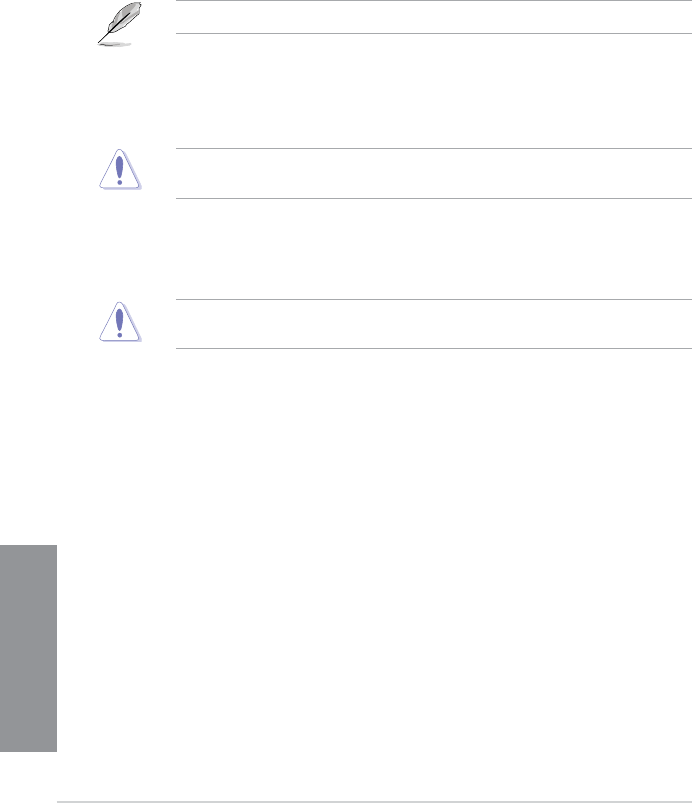
3-12
Chapter 3: BIOS setup
Chapter 3
DIGI+ VRM
CPU Load-Line Calibration [Auto]
Load-line is dened by Intel VRM spec and affects CPU voltage. The CPU working
voltage will decrease proportionally to CPU loading. Higher value gets a higher voltage
and better overclocking performance, but increases the CPU and VRM thermal. This
item allows you to adjust the voltage range from the following percentages to boost the
system performance: 0% (Regular), 25% (Medium), 50% (High), 75% (Ultra High) and
100% (Extreme).
Conguration options: [Auto] [Regular] [Medium] [High] [Ultra High] [Extreme]
The actual performance boost may vary depending on your CPU specication.
CPU Fixed Frequency [xxx]
Frequency switching affects the VRM transient response and the thermal component.
Higher frequency gets quicker transient response. Use the <+> and <-> keys to adjust
the value. The values range from 200k Hz to 350k Hz with a 50k Hz interval.
DO NOT remove the thermal module when switching to Manual Mode. The thermal
conditions should be monitored.
CPU Power Phase Control [Standard]
Allows you to control the power phase based on the CPU’s demands.
Conguration options: [Standard] [Optimized] [Extreme] [Manual Adjustment]
DO NOT remove the thermal module when switching to Extreme and Manual Mode. The
thermal conditions should be monitored.
CPU Power Duty Control [T.Probe]
DIGI + VRM Duty control adjusts the current and thermal conditions of every
component’s phase. Conguration options:
[T. Probe]: Select to maintain the VRM thermal balance.
[Extreme]: Select to maintain the current VRM balance.
CPU Current Capability [100%]
Allows you to congure the total power range, and extends the overclocking frequency
range simultaneously. Conguration options: [100%] [110%] [120%] [130%] [140%]


















